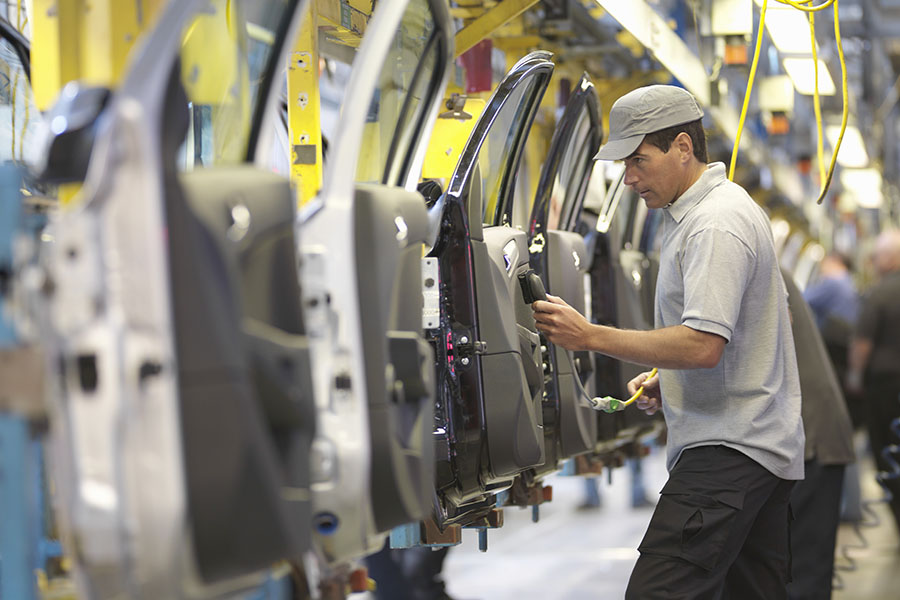"Mercer's study found that prosperous employees are twice as likely to work for a company with solid goals."
The employee turnover rate in the automotive industry is alarmingly high. In fact, according to research by the US National Automobile Dealers Association, some dealerships report turnover rates as high as 70–80%. This trend should concern everyone in the industry, as employee churn is often the symptom of a more serious and troubling array of issues. Happy people do not leave good jobs. Something is clearly wrong.
So, what is going on, and what can be done to fix it?
Focus on the employee experience
To start, companies must place employees at the heart of the organisation. Though this may seem easy to do in theory, the reality is much different. Most companies, judging by their decisions and actions, focus more on their finances than on their people.
Businesses are designed to make profits, so this regular focus on examining and analysing sales figures makes sense. But how many times a year do automotive businesses hold performance discussions? Maybe once or twice a year? Most organisations prioritize sales figures over performance evaluations because it is in the DNA of their operations—a practice that often comes at the expense of their most important asset: their people.
A commitment to change
To reduce turnover, the automotive industry must first acknowledge the need for change and then commit to a strategy that will produce change. There needs to be a paradigm shift from where the industry currently is, where it wants to go in the future.
To start, the automotive industry must ask the following questions:
1. How should work be organised?
2. How can value be created?
3. How do we ensure employees thrive in an evolving environment?
Mercer's 2018 Global Talent Trends Study identifies the five top trends that can turn around the turnover problem in the automotive industry:
1. Change@speed
2. Working with purpose
3. Permanent flexibility
4. Platform for talent
5. Digital from the inside out
Change at speed
Companies must have the ability to change, and change at speed. The world is constantly evolving and progressing forward. If an automotive business is not proactively embracing change—at the speed that change is occurring—it will be left behind.
Change, however, creates uncertainty in employees. Change impacts critical matters in life such as job security, financial health and the human need for an inspiring workplace and rewarding career. This is where leadership becomes imperative—by bringing certainty to times of uncertainty. Businesses that are able to provide employees with consistent, decisive and certain leadership are poised to thrive in times of change. In fact, the ability to change at speed becomes a differentiating organizational competency.
Working with purpose
Employees remain loyal to companies they connect with in terms of values and culture. Typically, culture is driven by the leaders within an organisation, and it is the responsibility of those leaders to clearly establish the values and purpose of the company.
Mercer’s study found that thriving employees are twice as likely to work for a company with a strong sense of purpose. Embedding a higher sense of purpose into the Employee Value Proposition unlocks individual potential and spurs employees to be change agents. Automotive companies can differentiate their brands from the competition by cultivating a workforce of engaged and inspired employees.
Permanent flexibility
Two percent of HR leaders in the automotive sector say that flexible work schedules are visibly present in their organisations—even though 50% of employees want their company to offer more flexible work options. However, more than 40% of employees are concerned that flexible work schedules will impact their opportunities for a promotion.1
Leaders in the automotive industry must seek innovative ways to increase flexibility for employees. Flexibility isn’t simply about working wherever or whenever, but about rethinking what work is done, how it is done, and by whom. Getting the most out of employees means working with them to build desirable schedules that prioritize productivity and availability.
Platform for talent
Automotive organisations must evolve into platforms that encourage in-house talent to develop their skills and thrive as professionals. By linking the creativity and ambition of employees to the evolving needs of an industry where skills sets and work demands are constantly advancing, automotive companies can become places not only of employment, but professional development.
Thirty-six percent of HR leaders provide analytics on the effectiveness of buy, build and borrow strategies.1 Industry professionals and employees want job security, workplace safety and the confidence that the future of the industry will never outgrow their skills and knowledge base. If companies serve as a platform for employees to nurture meaningful careers, that investment in human capital will help the company to thrive and increase its bottom line.
Digital from the inside out
For the automotive industry, and the world, the digital economy is already here. Companies that talk of “going digital” lag far behind the digital transformation learning curve. AI and automation will continue to unlock human potential by revolutionizing businesses on every level—from how they operate and source materials to how they develop workforces and provide solutions to evolving customer needs.
Fifty-six percent of employees say having state-of-the-art digital tools is key to achieving their professional objectives.1 Leaders in the automotive industry must leverage technology in ways that place employees at the heart of what they do. Put your people first, and profits will follow.
1People First: Mercer's 2018 Global Talent Trends Study
https://www.mercer.com/our-thinking/career/voice-on-talent/people-first-mercers-2018-global-talent-trends-study.html







